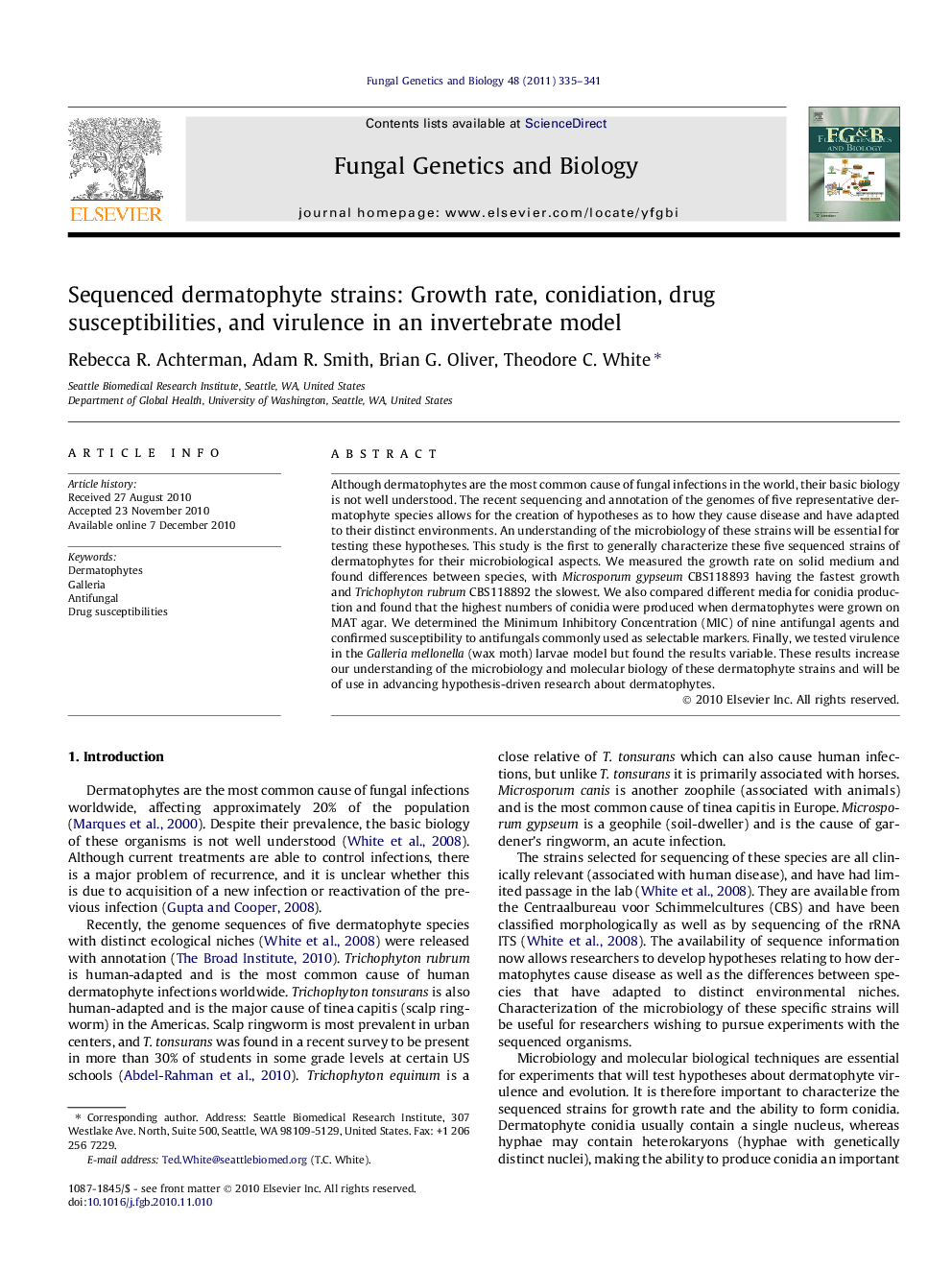| Article ID | Journal | Published Year | Pages | File Type |
|---|---|---|---|---|
| 10939597 | Fungal Genetics and Biology | 2011 | 7 Pages |
Abstract
Although dermatophytes are the most common cause of fungal infections in the world, their basic biology is not well understood. The recent sequencing and annotation of the genomes of five representative dermatophyte species allows for the creation of hypotheses as to how they cause disease and have adapted to their distinct environments. An understanding of the microbiology of these strains will be essential for testing these hypotheses. This study is the first to generally characterize these five sequenced strains of dermatophytes for their microbiological aspects. We measured the growth rate on solid medium and found differences between species, with Microsporum gypseum CBS118893 having the fastest growth and Trichophyton rubrum CBS118892 the slowest. We also compared different media for conidia production and found that the highest numbers of conidia were produced when dermatophytes were grown on MAT agar. We determined the Minimum Inhibitory Concentration (MIC) of nine antifungal agents and confirmed susceptibility to antifungals commonly used as selectable markers. Finally, we tested virulence in the Galleria mellonella (wax moth) larvae model but found the results variable. These results increase our understanding of the microbiology and molecular biology of these dermatophyte strains and will be of use in advancing hypothesis-driven research about dermatophytes.
Keywords
Related Topics
Life Sciences
Biochemistry, Genetics and Molecular Biology
Cell Biology
Authors
Rebecca R. Achterman, Adam R. Smith, Brian G. Oliver, Theodore C. White,
